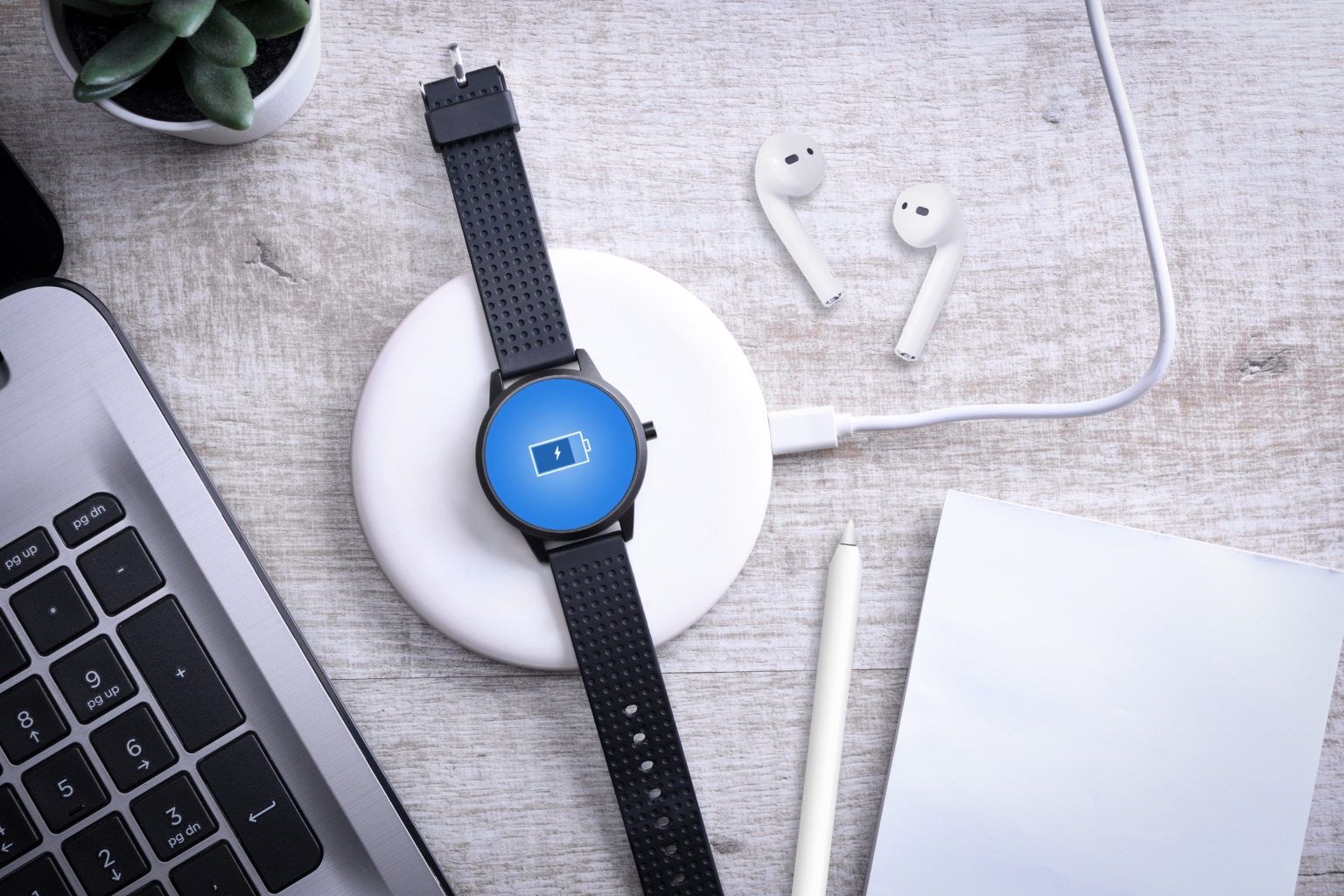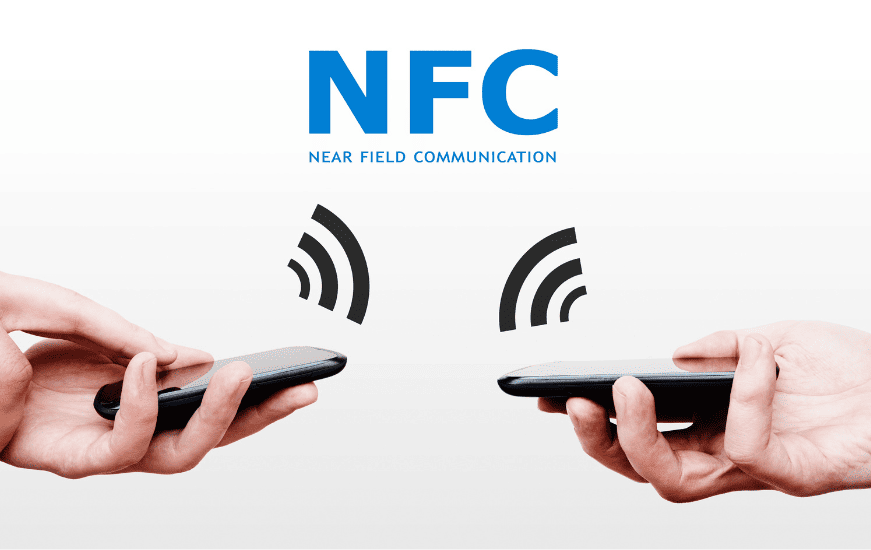
NFC WIRELESS CHARGING TECHNOLOGY
WHAT IS NFC?

NFC stands for Near Field Communication. It is a set of standards that allow two electronic devices to communicate when they are in close proximity with each other. While this technology has been around for a while, it has been gaining popularity recently. You probably come in contact with it every single day, be it through your smartphone, earbuds , credit cards, keycards and key fobs, or even some cars. NFC has multiple applications such as, the NFC chip in your phone allows you to do things like make payments with your phone or even unlock doors by tapping it on the door handle.
NFC wireless charging is a technology that allows you to charge your device wirelessly. It is based on the principle of electromagnetic induction. NFC technology is well known feature on a smartphone or on smartcards for data transfer as used for payment, and now it can be used to wirelessly charge small IoT devices like fitness watches, earbuds, styluses and other small consumer electronics, with one of the most visible applications being USI (Universal Stylus Initiative) Stylus Pen.
HOW DOES IT WORK?
The most common way of implementing this technology is by embedding an NFC chip a small IoT device like a sensor or in future even in a mobile phone, and placing a corresponding coil under the surface of a desk or in a charger. When the two devices are brought close to each other, they exchange data and power wirelessly.
As many small consumer & IoT devices already have NFC antenna inside, only additional fine-tuning of the existing antenna would be needed apart from adding an NFC chip for controlling the charging controller.
BENEFITS OF NFC WIRELESS CHARGING
The advantage of this wireless charging technology is that with some adjustments, an NFC-enabled device can use the same antenna for both, communication and charging. This means that NFC wireless charging operates at the 13.56 MHz band and currently supports power transfer up to 1 Watt. NFC Charging is ideal technology for low-powered devices without batteries or batteries <500 mAh.
NFC Charging is a convenient technology for small IoT devices where cables or connectors are not a viable option. Instead of the connector, the key advantage of using NFC Wireless Charging is that with some matching & fine-tuning, both communication and charging can be achieved with one antenna. Furthermore, unlike other WLC technologies, the antenna here can be down to only a few millimetres long and as small as 1 cm2 and less. The result is that NFC wireless charging has much smaller form factors for the antenna compared to other wireless charging standards.
By this charging, the wireless charging specification extends the communication functionality of NFC communication technology to enable wireless charging. NFC Forum specifies two different modes here: static and negotiated, depending on whether we want to charge only one or more devices. The static mode supports multifold charging (power transfer limited to 100mW) and a negotiated mode where higher transfer power is allowed for charging a single device.
Here the standard targets four power classes reflecting the guaranteed received power: 250 mW, 500 mW, 750 mW and 1 W. Other benefits are BOM cost optimization, optimized WLC system size, the convenience of using charging pollers smartphones for charging, fewer required components to achieve charging communication, etc.
The main benefits of NFC charging at a glance:
- Convenience – Charge your small consumer device anywhere, anytime. No need to untangle cords, plus less cords means less clutter on the desk.
- One size fits all – No need to find the right connector. Your wireless charger fits all your small consumer devices.
- Longevity – Regularly plugging phones or tablets to the power cable damages the ports, which often leads to the need to get new ones or to get costly repairs.
- Energy efficient – When your device is fully charged, the wireless charger turns itself off, saving energy and preventing the battery from overheating.
- Always charged – Quit worrying about your phone’s battery and extend its life by taking little “power charges” throughout the day. Simply place your phone on a wireless charger to retain its battery in the ideal 50-80% power range, whether you have a minute or an hour.
- Innovative design – Due to the antenna being only a few mm long, it is possible to design the charger in different creative forms.
KEY DIFFERENCES BETWEEN NFC AND QI CHARGING
The most popular wireless charging standard currently in use is the Wireless Power Consortium’s (WPC) Qi charging standard. People consider Qi and NFC charging as competitive technologies, but many experts consider them in many ways as complementary wireless charging technology rather than competitive technologies, depending on the used applications. Here are some comparisons between Qi and NFC charging:
Qi charging, specified by the wireless power consortium, is strictly a power standard designed for wireless power transfer, while the NFC standard was mainly developed as the industry standard for data transfer. The Qi charging is working at the frequency of 110 to 205 kHz. With these low frequencies, Qi relies on tight coupling, and thus, Qi delivers up to 15 W (which is specified for mobile devices) or up to 2.000 W for larger enterprise devices.
NFC wireless charging standard is specified by the NFC Forum and it operates at the frequency band of 13,56 MHz. Due to higher frequency, it no longer relies on tight coupling, which means we also allow more loose coupling as it is in use in payment applications. The main outcome is much smaller NFC antenna sizes and, thus, more freedom of antenna placement in the application.
A further big advantage of NFC wireless charging is a much higher data rate, up to 848 kb/s, compared to Qi charging with only 2 kb/s. One of the biggest differentiators are the coil sizes, so NFC can be used here if you require a small antenna form factor.
Due to all previously mentioned factors, the design of the WLC system is cheaper where only an additional NFC chip needs to be needed. In Conclusion, NFC charging is preferable for small IoT devices which already use an NFC antenna (13.56 MHz) for communication & data transfer and Qi charging is going to stay the main technology for only charging functionality at bigger enterprise devices that consume more power, anything with batteries 3.000 mAh and more.
Finally, it shall be mentioned that NFC-based wireless charging at 13.56 MHz and Qi- Charging are the only approved technologies and spectrum users for wireless charging in China. Other frequencies, like 6.78 MHz, are no longer allowed.
TARGET APPLICATIONS
Targeted applications include also sealed devices operating in a harsh environment where you want to keep the interior intact (e.g. industrial sensors, medical devices, sports devices, etc.)
What challenges are those products bringing to a WLC system, and how NFC charging is solving them:
All those products, as mentioned before, are very small and have a small form factor.
The reason is that due to space constraints and the small form factor, this brings the need to design smaller antenna to fit it into the device and to keep high power transfer at the same time.
The Listener (receiver) and the poller (transmitter) antennas can be only a few millimeters apart.
Target products which have NFC communication capability inside by simply adding wireless charging also using the NFC channel.
A moderate charging time is also given in the fact as we now see a 100 mAh battery can be very easily charged within one hour.
NFC also relies on loose coupling, which means you have a lot more freedom of placement.
The lower cost of ownership & design is also a quite important topic for products – so you can lower the total costs by removing e.g. connectors.
As no connector is needed, it is easier to achieve sealed, waterproof and dust-proof functionalities.
NFC FORUM GOALS AND LOOKING AHEAD
Learn more about the NFC Forum organization that leads the NFC Wireless Charging initiative and about CISC’s CTO Josef Preishuber-Pflügl who is chair of the NFC Forum WLC TF (WireLess Charging Task Force).
Article: The goal of the NFC Forum is to increase the WLC standard backed by NFC Forum certification. NFC Forum supports the NFC wireless charging to become a de facto standard for powering small IoT devices up to 1 Watt, with a potential gradual increase to 2 or 3 Watts. With the promotion of this technology, NFC Forum is trying to create a pull-through effect for manufacturers to respond to consumer demand and start integrating such small antennas. While more and more manufacturers adopt this technology, a potential multi-billion market for NFC charging NFC-enabled devices.
When it comes to tag types (NFC readers/writers), NFC Forum currently supports Tag Types 2 and 4, with other tag types being on the roadmap.
NFC Charging is now standardized in the NFC Forum, which means you can be interoperable on the market with a standardized product. Currently, there are several labs involved in the certification program, where the validation has been partially finished already. We can expect full certification of NFC Wireless Charging technology by the end of 2022.
Here CISC is an active participant in the standardization workgroup. CISC CTO Josef Preishuber-Pflügl is currently chair of the NFC Forum WLC TF (WireLess Charging Task Force) and is the prime contact for latest updates on NFC-based WLC.
CISC COMPLETE SOLUTION OFFERING
NFC WLC is an emerging technology where CISC has been involved since its beginning. This utilizes more than 20 years of RF knowledge that we provide to our customers. With our experience of seeing failures in NFC designs during our test sessions, our lab and we are continuously working on overcoming those ones. CISC offers a one-stop Solution, going from visibility studies, prototype design, Development of OEM modules, and full production support and consultancy.
We are very proud at CISC that we have the complete know-how in-house from designing hardware, Firmware (conformed to international standards) but also advancing those standards.
CISC is providing NFC Wireless Charging IP blocks for a reliable integration to customer designs. In general, CISC is providing a set of Hardware IP blocks and Firmware libraries and also multiple antenna designs with various form factors for reliable integration into customer’s products and applications.
Using our fully tested technology elements allows our customers to benefit from a faster time to market.

